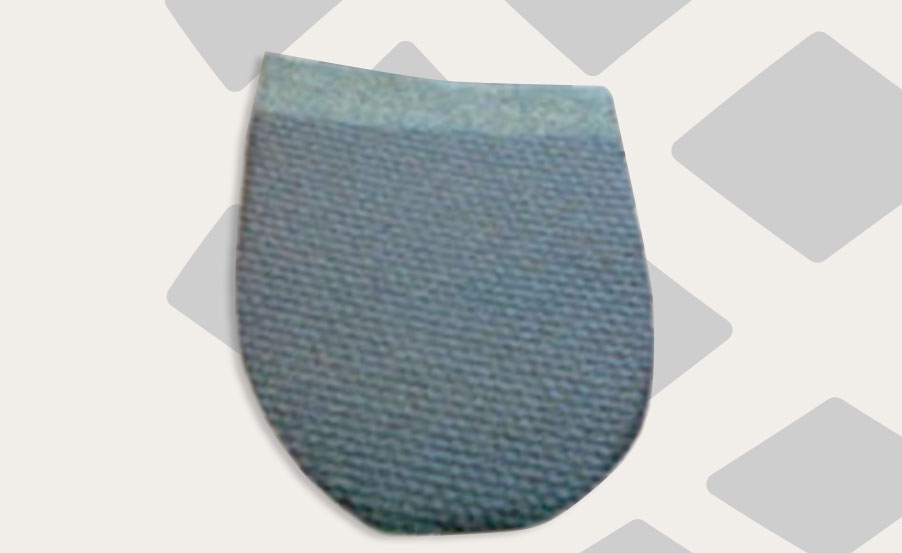It seems like I am using heel lifts more and more in my practice. My office buys big sheets of 1/8 and 1/4 inch rubber cork from JMS Plastics for my use. I love to cut out heel lifts of this durable, but not too hard, material. I know one of the reasons that I am using heel lifts more is my attempt to elevate the heel with patients in zero drop shoes, and this use is on the rise. Of course, I am using the lifts when I think that the patient is walking too far back on their heels. I prefer to experiment with heel lifts separately from the orthotic device before having KevinRoot build the lift into the device.

Here is a typical heel lift skived distally for comfort made from rubber cork
What problems present to my office where I will use heel lifts? Definitely, achilles tendonitis patients, including calf strain, will get heel lifts, and a recommendation for shoes with higher heels. Here this simple study looked at heel lifts vs. eccentric strengthening exercises for achilles.
Efficacy of heel lifts versus calf muscle eccentric exercise for mid-portion Achilles tendinopathy (HEALTHY): a randomised trial
Another problem that I use heel lifts is plantar heel pain. The biomechanics is the attempt of the heel lift to put your weight more forward and off the heel, but also to take tension off a tight achilles. I definitely found that this works better if the heel lift is placed in a shoe with a heel elevation like the Brooks Addiction. Here’s a chart of the heel drop of some running shoes from James McCormack’s site.
If you look at the photo above and imagine a patient standing upon the heel lift, the weight bearing is increased in the heel if the power of the heel lifts can not move body weight forward. This increased heel plantar pressure may increase plantar heel pain when you are trying to help it. Going to a softer, say Poron™ may lessen the heel pain, but placing soft material under the heel always has a chance of producing more instability. Also, what is the tissue suspended just in front of the lift? Of course, it is the plantar fascia, and this suspension may stress out the fascia more than any off weighting will help. Therefore, use lifts for plantar heel pain primarily in shoes with some heel elevation, and observe what the patient’s response is.
A few other thoughts for reflection about heel lifts are:
- 50% of my low back patients are helped with heel lifts (we definitely know one cause is that heel lifts take tension off the hamstrings and hamstring tension is a well known source of low back pain)
- Only use heel lifts on one side when you are treating a short leg.
- When using heel lifts with orthotic devices, always place the lift under the orthotic device and use firm material like the rubber cork mentioned above. Soft material under the heel of the orthotic can produce unwanted instability.
Review Figure 3 from this article. Look at the stress increase for a unilateral or single leg heel raise right as you initiate heel lift, then the stress drops once the heel is 1/2 inch off the ground. Heel lifts lift this period where the most stress on the achilles occurs and why they are so successful.





